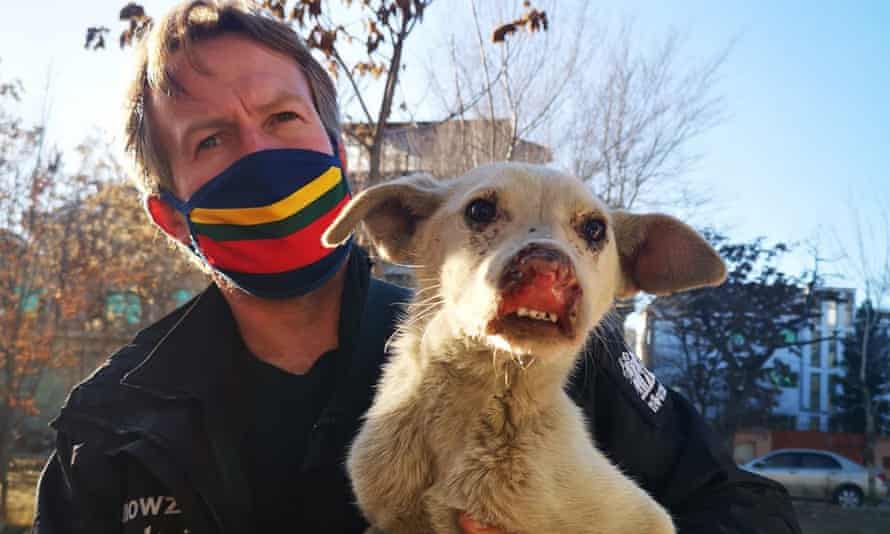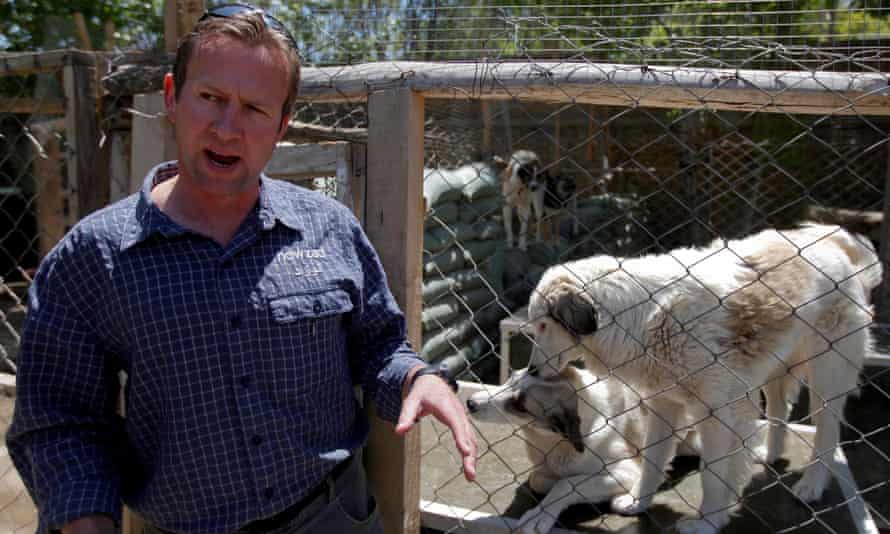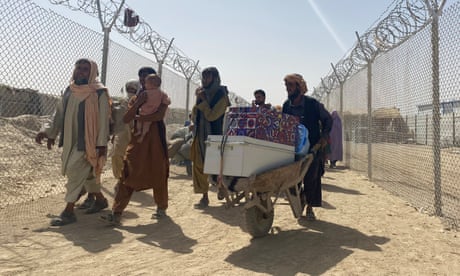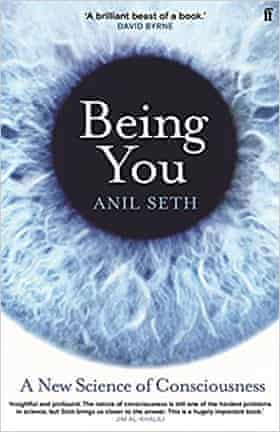Ex-Marine had accused government aide of ‘blocking’ efforts to evacuate dogs and cats from animal shelter

PA Media
Mon 30 Aug 2021
A former Royal Marine has admitted his emotions “got the better” of him when he left an expletive-laden message for a government aide while trying to evacuate about 170 dogs and cats from an animal shelter in Afghanistan to the UK.
Paul “Pen” Farthing arrived at London’s Heathrow airport in a privately funded charter flight at about 7.30am on Sunday, after his Operation Ark campaign to get workers and animals from the Nowzad shelter in Kabul out of Afghanistan.
A recording, obtained by The Times, captured Farthing berating Peter Quentin, a special adviser to the defence secretary, Ben Wallace, earlier in the week, accusing him of “blocking” efforts to arrange the evacuation flight.
On Monday, Farthing told ITV’s Good Morning Britain: “I’m incredibly embarrassed about my language, I do apologise to everybody who’s listened to that. I was at the lowest point I could possibly be. I understand how the world works but emotions got the better of me, so for all those who had to listen to that I do apologise for my language.
“I should not have said it like that, but the sentiment, yes, I was just incredibly upset, angry, frustrated, it was the lowest point. I had no other option, I didn’t know what else to do.”
Farthing’s Operation Ark campaign attracted attention on social media but Wallace complained it was distracting from the focus on evacuating the most vulnerable out of Afghanistan.
Wallace previously said Ministry of Defence staff had faced abuse from Farthing’s supporters.
However, Farthing dismissed claims that he was helped by the UK government to get into Kabul airport with his animals. He said: “Nobody in the British government facilitated my entry into that airport – I did that with the Taliban.
“I came up to the British checkpoint, that was the first time – and this is well into the airport, the Taliban and British are stood there, there’s some barbed wire separating them – that was the first time I spoke to any British people.
“So whoever is making any accusations or any comments needs to actually have been stood there on the ground to see how I got into that airport.
“Nobody facilitated my entry … any interpreters or anybody else, there was me and the truck full of dogs and cats, which went into a cargo hold where you cannot put people.”
Farthing added he was the only person on the flight but he was told there was “enough capacity” to get the remaining people in the airport out.
He said: “I was probably like the last person to enter that airport – it was closed. Americans, the British, had obviously stopped taking people in because there had to be a point where they stopped taking people in. So they assured me they had enough capacity for everybody who was inside the airport.”
All of the almost 100 dogs and 70 cats on the flight were “healthy”, with the dogs placed in kennels, according to Dominic Dyer, an animal welfare campaigner and supporter of Farthing.
The Foreign Office minister James Cleverly said the government had prioritised the evacuation of people over pets.
He told LBC Radio: “We have always prioritised evacuating people over evacuating animals. Mr Farthing is a British national, he had the opportunity to leave Afghanistan much earlier. His staff are enrolled on to the scheme by which Afghans that worked with the British were able to be evacuated. But as I have said, we have always prioritised the evacuation of people.”
Ex-Marine Pen Farthing arrives in UK with dogs and cats onboard flight
Farthing expresses ‘mixed emotions’ as animal rescue charity confirms staff left behind in Afghanistan
Afghanistan – live updates

Ben Quinn
@BenQuinn75
Sun 29 Aug 2021
A former Royal Marine whose campaign to secure the evacuation of his Kabul animal shelter divided opinion in Britain has told of his “mixed emotions” after arriving in Heathrow onboard a chartered flight carrying dogs and cats.
Paul “Pen” Farthing said on Twitter on Sunday that he had landed at Heathrow after what he had described as the “partial success” of a campaign he and supporters had called Operation Ark, in which he had attempted to secure the evacuation of animals as well as staff and their families.
Farthing’s campaign sparked a mixed reaction in the UK and he was reported to have left an expletive-laden message for a government aide as he sought to place his staff and animals on a flight out of Afghanistan.
His charity, Nowzad, confirmed to the BBC on Sunday that Farthing and his animals had left the country on Saturday without his staff.
Dr Iain McGill, a vet working with the charity, said Farthing’s chartered plane arrived at Heathrow on Sunday morning with 90 to 100 dogs and 60 to 70 cats on the flight.
“The animals, considering what they’ve been through, are in very good shape on the whole,” McGill told the BBC, adding that Farthing was very concerned about the welfare of his staff and others in Afghanistan.
Farthing, who has spoken in the past of what he believed was the threat faced to the animals from the Taliban’s interpretation of Islam, added in his tweet on Sunday: “Heathrow Ops centre, Border Force, HARC & Air Pets were all bloody amazing. Witnessed 1st hand the compassion Heathrow is showing Afghan refugees.”
The Times said at the weekend it had obtained a leaked audio recording of Farthing berating Peter Quentin, a special adviser to the defence secretary, Ben Wallace, whom he accused of “blocking” efforts to arrange a flight.
Farthing’s campaign to get workers and animals from the Nowzad shelter out of Afghanistan had caused controversy in recent days, after receiving huge public support.
Although visas were granted for his 24 staff and their dependants, Farthing refused to leave without his animals and aimed to get 200 dogs and cats out of the country.
On Friday, the Ministry of Defence (MoD) announced that the ex-Marine and his animals were at Kabul airport and clearance for their charter flight had been sponsored by the UK government.
In the recorded message, reportedly sent on Monday, Farthing threatened to “destroy” Quentin on social media if he did not help arrange the evacuation.
He said: “I just found out that is you blocking me getting this flight out of Afghanistan for my staff and the animals. So here’s the deal buddy. You either get me that fucking Isaf number and you get me permission to get on to that fucking airfield, or tomorrow morning I’m going to turn on you and the whole fucking country, and everybody else who’s invested in this rescue, is going to know it’s you, you, blocking this fucking move. All right?”
Ex-marine Pen Farthing said to have left expletive-laden message for defence secretary’s adviser as he sought to fly out staff and pets

PA Media
Sat 28 Aug 2021
A former Royal Marine who founded an animal shelter in Kabul left an expletive-laden message for a government aide as he sought to place his staff and pets on a flight out of Afghanistan, according to reports.
The Times newspaper said it had obtained a leaked audio recording of Paul “Pen” Farthing berating Peter Quentin, a special adviser to the defence secretary, Ben Wallace, who he accused of “blocking” efforts to arrange a flight.
Farthing’s campaign to get workers and animals from the Nowzad shelter out of Afghanistan has caused controversy in recent days, after receiving a huge amount of public support.
Although visas were granted for his 24 staff and their dependents, Farthing refused to leave without his pets and aimed to get 200 dogs and cats out of the country.
On Friday, the Ministry of Defence (MoD) announced that the ex-marine and his animals were at Kabul airport and clearance for their charter flight had been sponsored by the UK government.
In the recorded message, reportedly sent on Monday, Farthing threatened to “destroy” Quentin on social media if he did not help arrange the evacuation.

UK defence secretary complains about pleas to rescue pets from Kabul
He said: “I just found out that is you blocking me getting this flight out of Afghanistan for my staff and the animals. So here’s the deal buddy. You either get me that fucking Isaf number and you get me permission to get on to that fucking airfield, or tomorrow morning I’m going to turn on you and the whole fucking country, and everybody else who’s invested in this rescue, is going to know it’s you, you, blocking this fucking move. Alright?”
He continued: “I will get my staff out of here and I’ll get so many other people out of here on this flight and then the dogs and cats are going in the cargo hold. Nobody can sit in the cargo hold, only the animals.”
Farthing demanded paperwork saying his staff had been “approved”, otherwise he was “going to spend the rest of my time fucking destroying you on social media and every other fucking platform I can find.”
He said he had served for 22 years in the Royal Marines and he was “not taking this bollocks from people like you who are blocking me”.
Farthing insisted that he was “taking people out of this country and others on a privately funded plane”.
His “Operation Ark” campaign became hugely successful on social media, but Wallace complained it was distracting those focusing on evacuating the most vulnerable.
Wallace previously said MoD staff had faced abuse from Farthing’s supporters.










